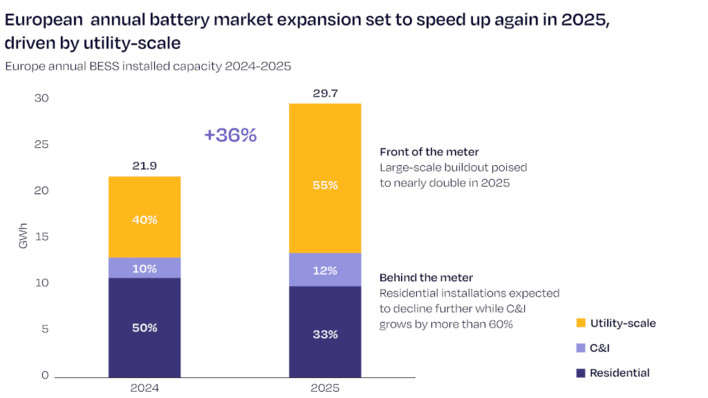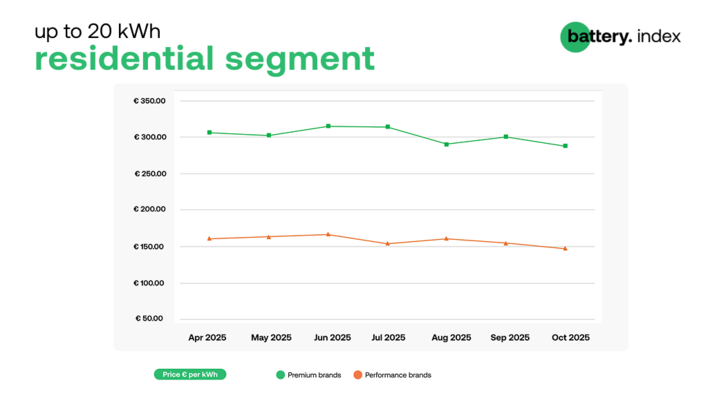The future market for stationary energy storage systems (ESS) is one of the most heavily discussed topics in the power industry today. Significant growth is expected in particular for stationary battery systems, which accounted for only 2 GWh globally in 2015 but is expected to grow to 33 GWh by the end of the decade. This is mainly due to the significant drop in costs and thus ESS’ increased competitiveness compared to traditional, non-storage solutions. At the same time, the variety of ESS technologies addressing different use cases is increasing, thus understanding the cost of energy storage to enable comparison is vital. But what does this really mean?
Basic rules to follow
While there is general consensus to use levelized cost of energy (LCOE) for comparing different energy generation technologies, such as solar parks, wind farms and coal plants, there is no universally applied metric for calculating the cost of energy storage. This can make it a tough exercise for all stakeholders: storage system manufacturers have a hard time explaining cost advantages over their competition, investors struggle with making an educated decision for financing and end users do not know which energy storage solution is most economical in the targeted application. In order to determine meaningful, comparable ESS costs, there are three basic rules to follow.
Compare costs within same use cases only
In contrast to technologies for generation, which have the single use case of generating electricity, energy storage technologies can serve a variety of use cases. Each use case requires different operating parameters, which affect the costs, and each storage technology optimizes along these parameters differently. Therefore, cost comparisons of energy storage only make sense for a common and clearly defined use case.
Choose the right basis
Cost of energy storage is typically based either on the provided energy (i.e., kWh, MWh) or on the power capacity (kW, MW). Choosing the most appropriate basis depends on the value that energy storage is adding in the specific use case, i.e., in many cases, the costs that are avoided through application of energy storage.
Know your cost influencers
The key to comparing apples with apples is to make sure that individual cost factors are calculated with the same level of detail and are based on comparable assumptions.
Upfront costs:All necessary investments required for the complete and connected system, e.g., power electronics, balance of system, assembly.
O&M costs: Costs for periodic minor and major servicing.
Charging costs: Cost of charging the ESS with either grid sourced or self-generated electricity, impacted by roundtrip efficiencies and energy needed for ESS operation.
Useable energy over the lifetime: Cost of an ESS intended for energy-based applications should be put in relation to the expected energy output of the ESS over its lifetime – determined by calendar life, number of cycles per year, cycle lifetime and depth of discharge.
Residual value: After-life value based on the achievable sales price for the individual components including inverters, switchgear and transformers, can be also negative.
Financing costs: Discount factor reflecting the financing costs, typically the weighted average cost of capital, needs to be applied to all outflowing and inflowing cash.
Levelized cost of stored energy
In order to reflect all of the cost influencers explained above in a simple metric, it makes sense for energy-based use cases to assume a constant – or levelized – price per kWh over the applicable lifetime of the ESS. The resulting cost metric is called Levelized Cost of Stored Energy (LCOS) – the constant and thus levelized price per kWh at which the net present value of the ESS project is zero.
Implications for energy storage stakeholders
In energy-based applications, LCOS can be an easily calculable, sufficiently detailed metric that enables a meaningful comparison of different storage technologies, as well as between storage and non-storage solutions. Cost metrics like LCOS should be applied with caution, though. Even if the underlying assumptions of a cost comparison are clearly communicated, the results might get quoted as a reference for the general viability of ESS in completely different, non-applicable situations. This could lead to energy storage being ruled out before a detailed assessment for the specific use case is done.
Standardization of methods increases transparency
Nevertheless, standardization of the methods for calculating energy storage costs increases transparency and helps to set expectations regarding the feasibility of energy storage solutions. This enables the market to weed out business cases where ESS is not yet feasible and focus on the continuously growing number of economically viable projects. The energy storage industry as a whole will benefit from further increased confidence in ESS as a viable alternative to non-storage solutions. (HCN/Florian Mayr)
Read more about energy storage
Stay informed, get our free newsletter twice a week, register here
Related news:








